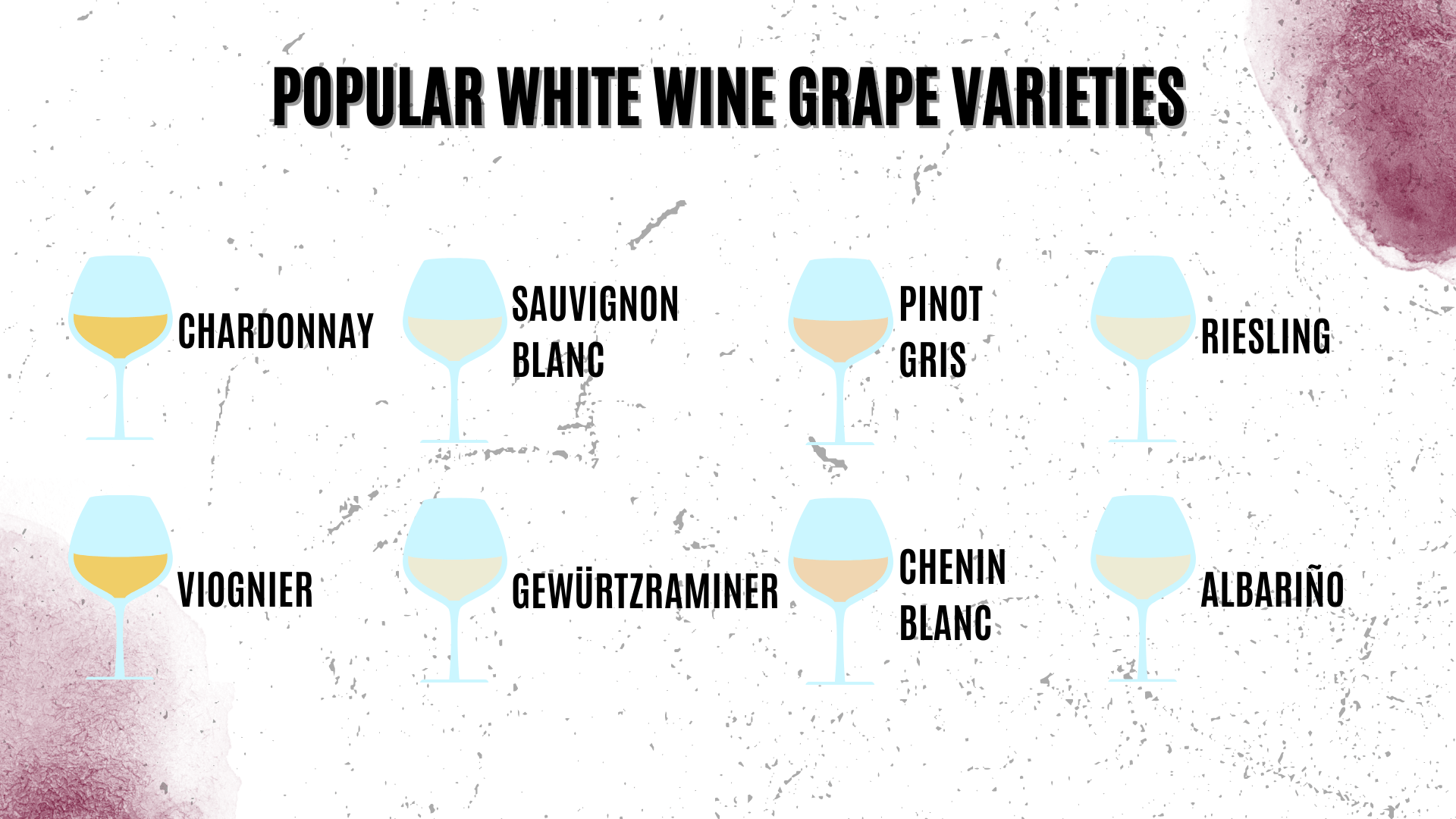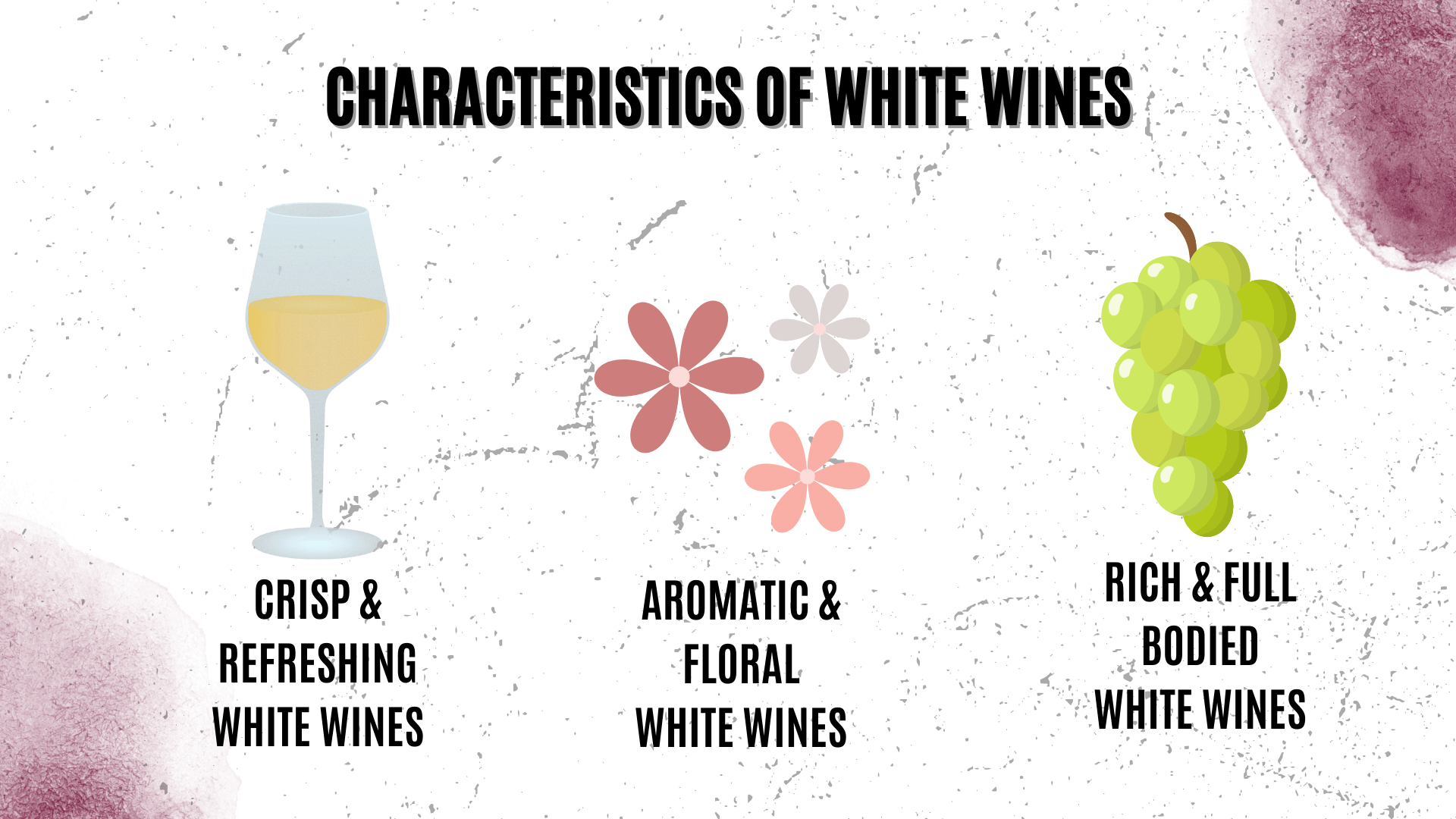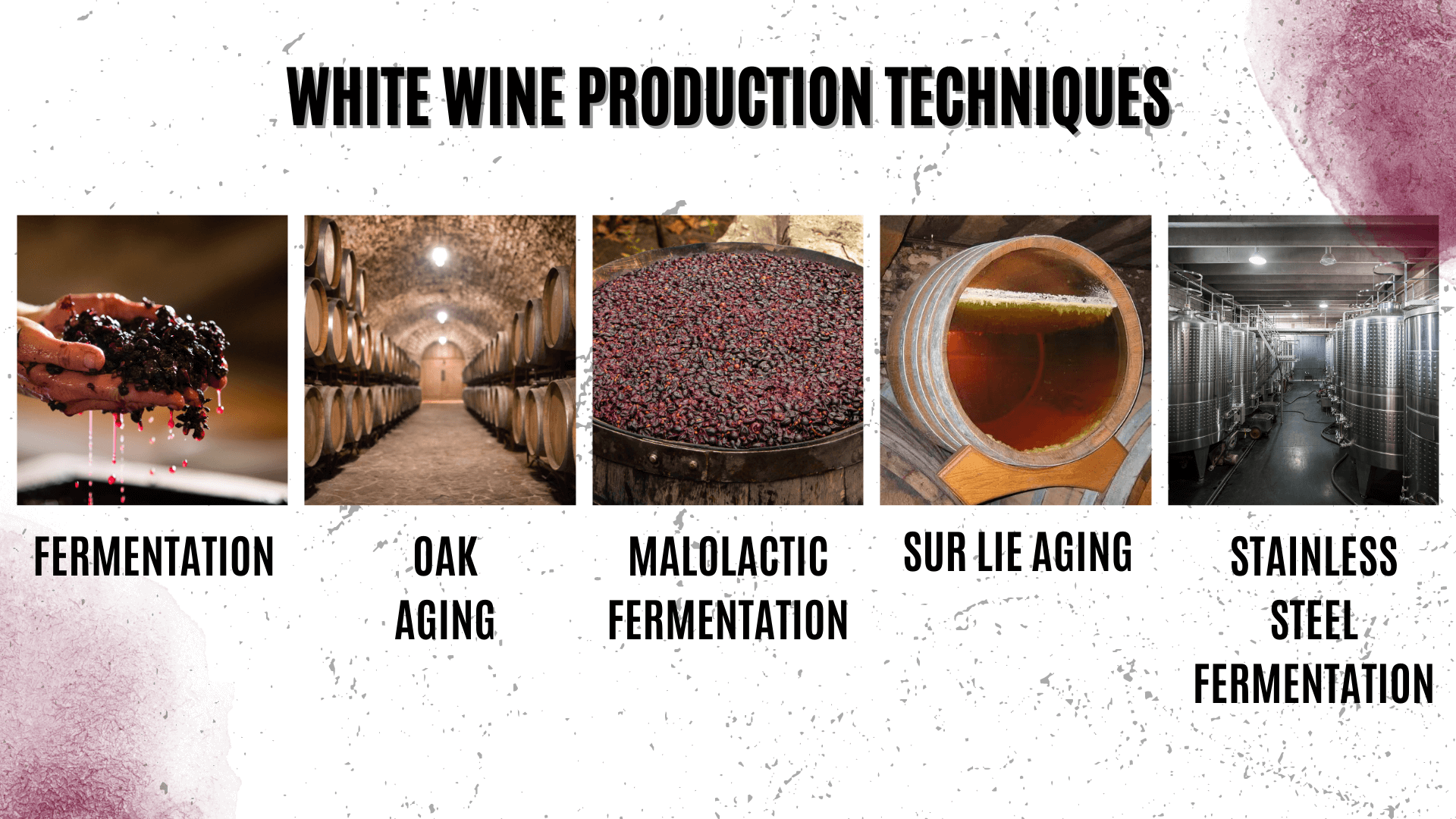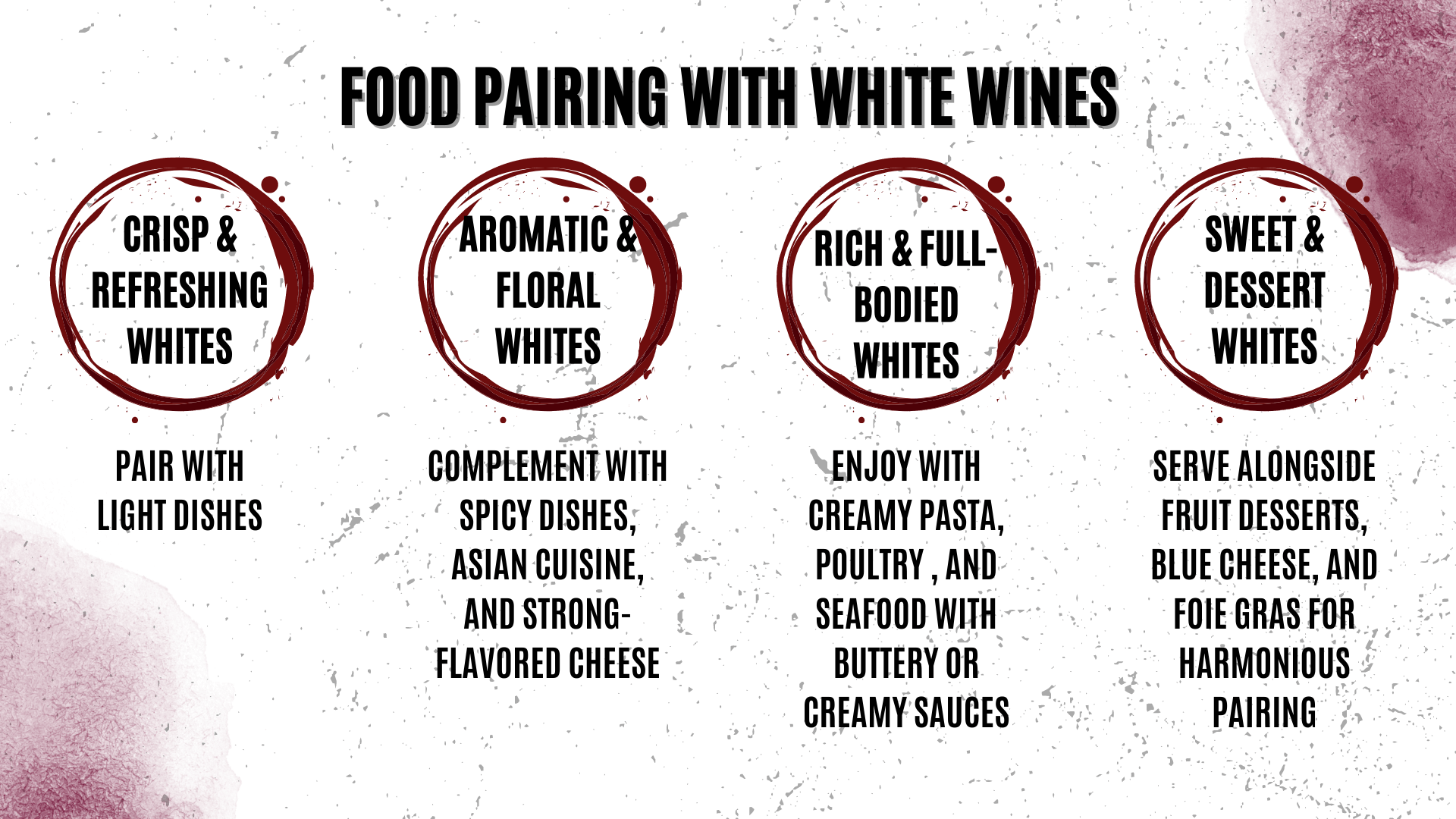Introduction
White wines are cherished for their elegance, versatility, and the wide range of styles they offer. From crisp and refreshing to rich and full-bodied, white wines are perfect for a variety of occasions, and they pair exceptionally well with many different foods. In this comprehensive guide, we’ll explore popular white wine grape varieties, styles, production techniques, food pairings, and more.
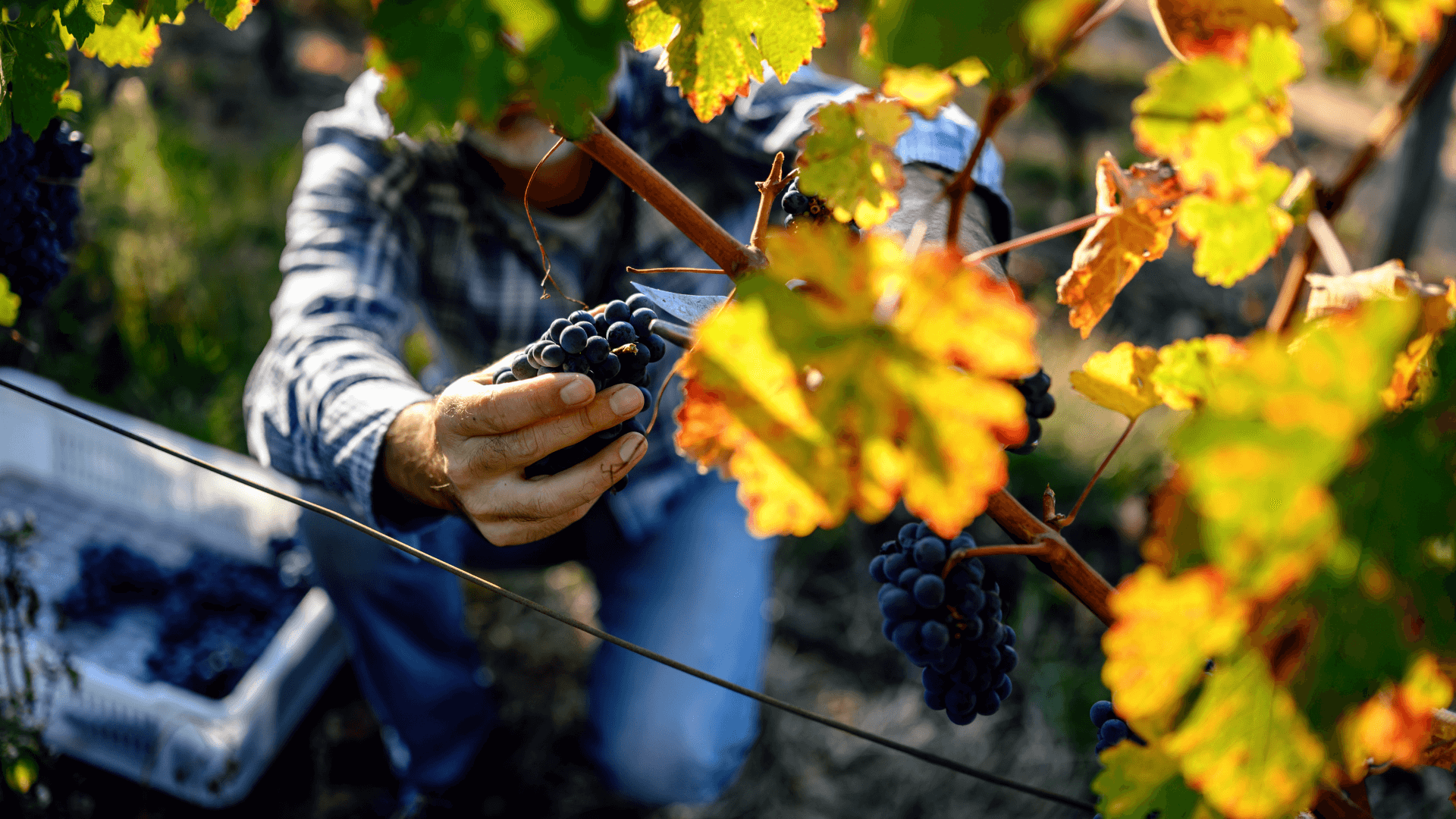
I. History
The history of white wine dates back thousands of years, with evidence of winemaking dating back to ancient Egypt and Mesopotamia. The Greeks and Romans played a significant role in the development and spread of white wine production, and the Middle Ages saw further advancements in viticulture and winemaking techniques. Throughout history, white wines have been enjoyed by royalty and everyday people alike, and their popularity continues to grow today.
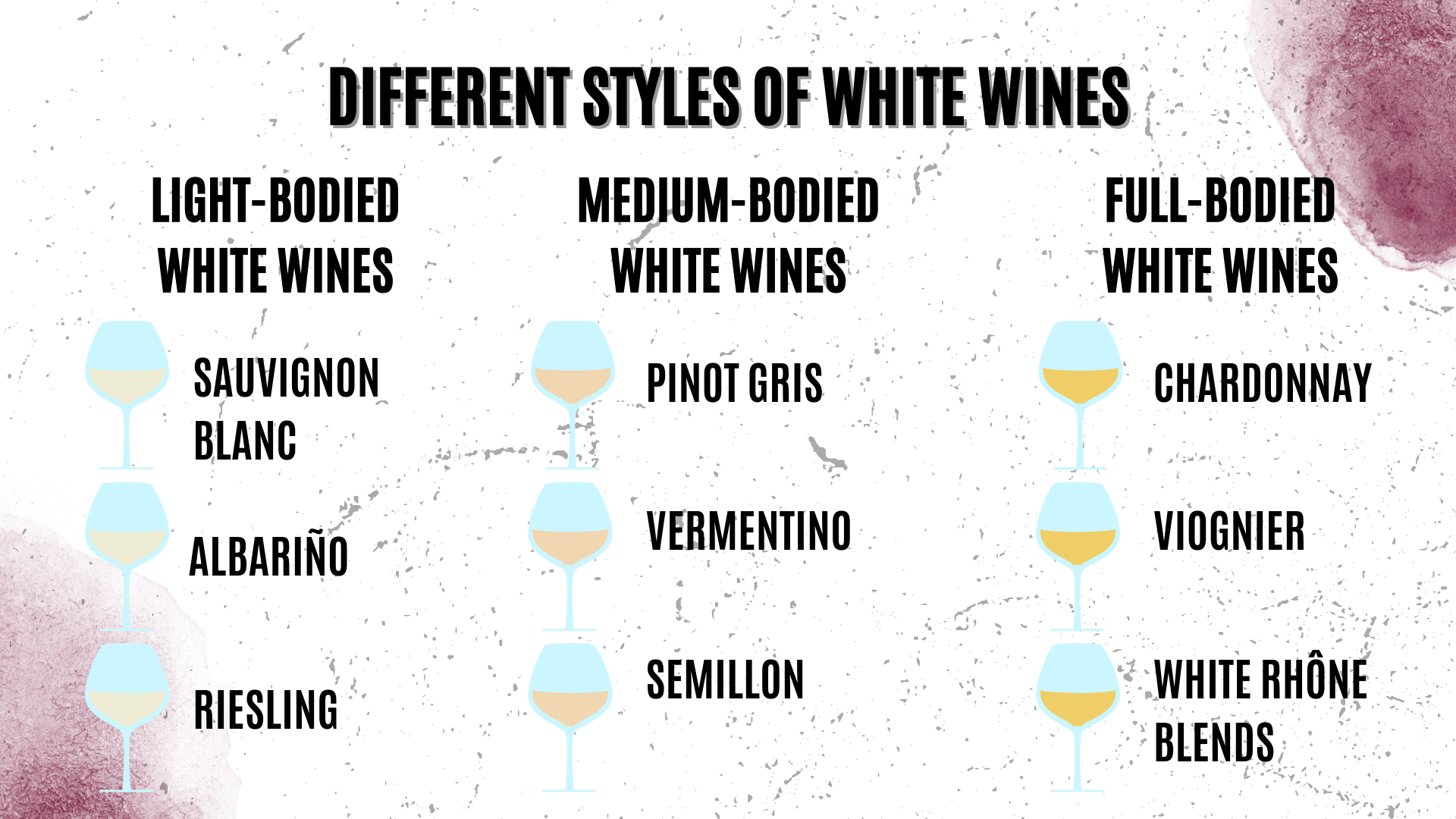
II. Different Styles of White Wines
White wines can be categorized into different styles based on their body, which is influenced by factors like grape variety, alcohol content, and winemaking techniques. Here are some examples of full-bodied, medium-bodied, and light-bodied white wines:
Full-bodied white wines:
These white wines have a rich, opulent texture, and they often undergo oak aging or malolactic fermentation, which can contribute to a creamy, buttery mouthfeel. Some examples of full-bodied white wines include:
- Chardonnay (especially those from California, Burgundy, or Australia): These wines often exhibit flavors of ripe apple, pear, vanilla, and butter due to oak aging and malolactic fermentation.
- Viognier: A full-bodied white wine with flavors of apricot, peach, and floral notes, often with a hint of spice.
- White Rhône blends: These blends, which typically include grapes like Marsanne, Roussanne, and Viognier, can produce rich, complex white wines with flavors of stone fruit, nuts, and honey.
Medium-bodied white wines:
Medium-bodied white wines strike a balance between the light, crisp freshness of lighter white wines and the rich, full texture of full-bodied white wines. Examples of medium-bodied white wines include:
- Pinot Gris/Pinot Grigio: Depending on where it’s grown, this grape can produce wines ranging from light and zesty to medium-bodied and rich, with flavors of pear, apple, and citrus.
- Vermentino: A Mediterranean white wine with flavors of citrus, green apple, and herbal notes, often with a slightly oily texture.
- Semillon: Often blended with Sauvignon Blanc, this grape can create medium-bodied wines with flavors of lemon, honey, and sometimes lanolin.
Light-bodied white wines:
These wines are known for their crisp, refreshing character and vibrant acidity, making them ideal for warm weather and pairing with lighter fare. Some examples of light-bodied white wines include:
- Sauvignon Blanc: A high-acid white wine with flavors of citrus, gooseberry, and green bell pepper, often with a pronounced herbal or grassy character.
- Albariño: A Spanish white wine with flavors of citrus, green apple, and peach, often with a subtle saline or mineral quality.
- Riesling: This versatile grape can produce both bone-dry and sweet wines, but when made in a dry style, Riesling is often light-bodied, with flavors of green apple, lime, and wet stone, and a vibrant, mouthwatering acidity.
III. Popular White Wine Grape Varieties
- Chardonnay – Known for its versatility, Chardonnay can produce wines ranging from light and crisp to full-bodied and creamy. The grape thrives in cool and warm climates, resulting in diverse flavor profiles, from green apple and citrus to tropical fruit and butter.
- Sauvignon Blanc – This high-acid white wine is known for its bright, refreshing flavors of green apple, citrus, and grassy notes. It is a perfect accompaniment to seafood dishes, salads, and goat cheese.
- Pinot Grigio (Pinot Gris) – With flavors of green apple, pear, and melon, Pinot Grigio is a light, crisp wine that pairs well with light dishes like seafood, salads, and chicken.
- Riesling – Riesling can range from dry to sweet, offering flavors of green apple, citrus, and peach. It is known for its high acidity and ability to age well.
- Viognier – This aromatic grape variety produces wines with flavors of apricot, peach, and floral notes. It is typically medium-bodied and pairs well with dishes featuring bold spices or creamy sauces.
- Gewürztraminer – An intensely aromatic grape, Gewürztraminer offers flavors of lychee, rose, and spice. It is often off-dry and pairs well with spicy dishes or strong-flavored cheeses.
- Chenin Blanc – Chenin Blanc is a versatile grape that can produce wines ranging from dry to sweet, with flavors of apple, pear, and honey. It is often used to make sparkling wines and dessert wines.
- Albariño – This Spanish grape variety produces wines with flavors of citrus, peach, and floral notes. Albariño is typically crisp and refreshing, making it a perfect match for seafood and light dishes.
IV. Characteristics of White Wines
- Crisp and refreshing white wines – Light-bodied and high in acidity, these wines are perfect for hot summer days and pair well with light dishes like salads, seafood, and light appetizers.
- Aromatic and floral white wines – Wines like Viognier and Gewürztraminer offer intense, floral aromas and flavors. These wines work well with spicy dishes and Asian cuisine.
- Rich and full-bodied white wines – Chardonnay and some oaked Viogniers can create full-bodied, creamy wines that pair well with rich dishes like creamy pasta, poultry, and seafood with buttery sauces.
- Sweet and dessert white wines – Late-harvest Riesling, Sauternes, and Ice Wine are examples of sweet white wines that pair well with fruit desserts, blue cheese, and foie gras.
V. White Wine Production Techniques
- Fermentation – The process of converting grape sugar into alcohol. White wines are typically fermented at cooler temperatures to preserve their fruity and floral flavors.
- Oak aging – Aging wine in oak barrels can impart flavors of vanilla, toast, and spice, as well as add body and richness to the wine.
- Malolactic fermentation – This secondary fermentation process converts malic acid into softer, creamier lactic acid, adding richness and complexity to white wines, particularly Chardonnay.
- Sur lie aging – Aging wine on its lees (dead yeast cells) can enhance the wine’s texture and add creaminess and complexity.
- Stainless steel fermentation – Using stainless steel tanks for fermentation preserves the wine’s fruity and floral flavors, resulting in a fresher, more vibrant wine.
VI. Food Pairings for White Wines
- Crisp and refreshing whites – Pair with light dishes like salads, shellfish, and fresh, tangy cheeses.
- Aromatic and floral whites – Complement with spicy dishes, Asian cuisine, and strong-flavored cheeses.
- Rich and full-bodied whites – Enjoy with creamy pasta, poultry, and seafood with buttery or creamy sauces.
- Sweet and dessert whites – Serve alongside fruit desserts, blue cheese, and foie gras for a harmonious pairing.
VI. Fun Facts
- White wine production actually predates red wine by several hundred years, with some of the earliest known examples dating back to 6000 BCE.
- Chardonnay, one of the most popular white wine grape varieties, is grown in virtually every wine-producing region around the world.
- Many white wines, such as Riesling and Chenin Blanc, can age for decades, developing complex tertiary flavors and increased depth over time.
- White wines can be made from black grapes by separating the grape juice from the skins immediately after crushing, resulting in a clear juice that produces a white wine.
Frequently Asked Questions
White wines are best served chilled, usually between 45-55°F (7-13°C). Lighter white wines should be served at the cooler end of the spectrum, while fuller-bodied white wines can be served slightly warmer.
While many white wines are best enjoyed young and fresh, some white wines, like Riesling, Chenin Blanc, and certain Chardonnays, can age gracefully for several years, developing complex flavors and aromas.
Store white wines in a cool, dark place with a consistent temperature and humidity level, ideally in a wine fridge or cellar. Keep bottles on their sides to prevent the cork from drying out.
Oaked white wines have been aged in oak barrels, which can impart flavors like vanilla, toast, and spice, as well as add body and creaminess to the wine. Unoaked white wines are typically aged in stainless steel tanks or neutral containers, resulting in a fresher, more fruit-forward wine.



